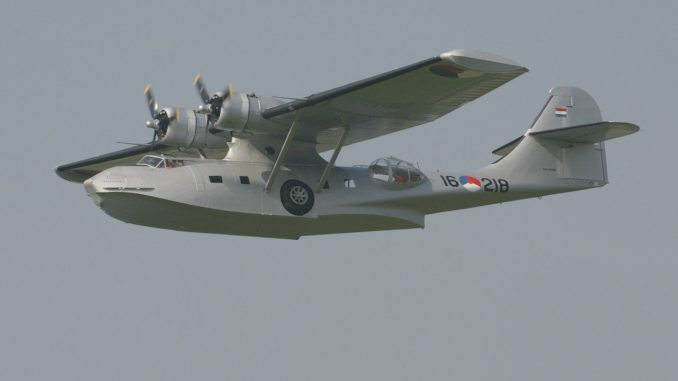
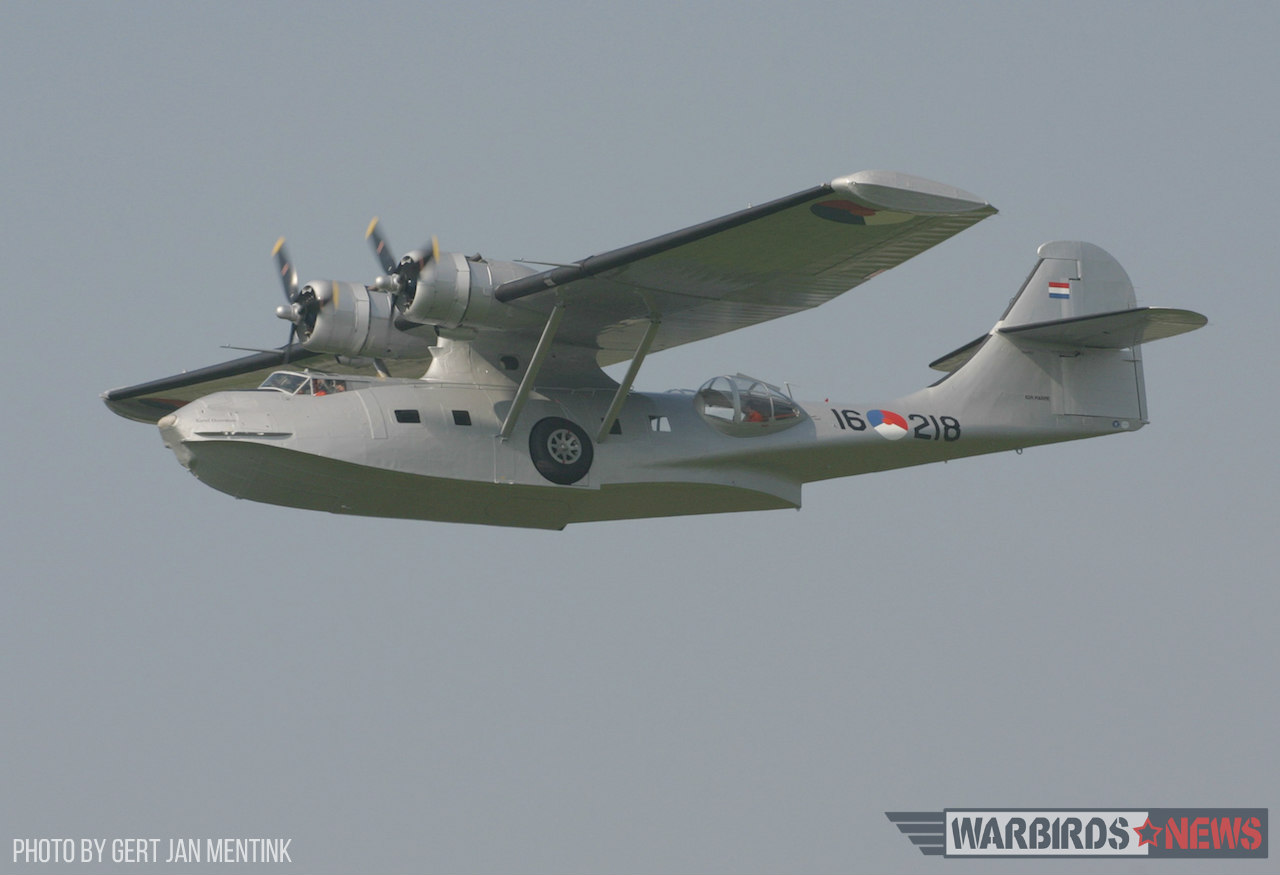
By Gert Jan Mentink – Dutch Aviation Society / Scramble
The PBY Catalina is one of the most recognizable warbirds in the world and although not exactly common, there are still a number of them being flown worldwide. Surprisingly, the world’s oldest flying PBY Catalina cannot be found in the USA or Canada, but rather in the Netherlands, where she is lovingly flown and maintained by the Catalina Foundation, or ‘Stichting Exploitatie Catalina PBY’ for full.
Based at Lelystad Airport, Consolidated PBY-5A registered PH-PBY, is named the “Karel Doorman”, to pay respect to this Dutch Admiral, who lost his life while commanding an Allied fleet that tried to stop the Japanese invasion of the Netherland East Indies during the Battle of the Java Sea in February 1942. This particular aircraft has an outstanding history in the fact that it was the first PBY Catalina used to singly destroy a U-Boat and also the highest scoring Catalina of WWII with three U-Boats to its credit.
Consolidated PBY-5A PH-PBY s/n 300, was originally delivered to the U. S. Navy at Naval Air Station Norfolk (VA) as BuNo. 2459 on December 23, 1941. Assigned to VP-73, the aircraft was given the Squadron code 73-P-9. Five days after arriving, this aircraft along with four others were shipped to Iceland, arriving between January 12-16, 1942 at Fleet Air Base Reykjavik. On Febraury 1, 1942, 73-P-9 flew its first of many operational sorties consisting mainly of convoy escort and iceberg patrols in the area between Iceland and Greenland, known as the Denmark Straits. In August of 1942, the German Kriegsmarine submarines began in earnest attacking North Atlantic convoys in groups, known as ‘Wolfpacks”. The PBY’s on duty began flying “Hvalfjord Sweeps”, during which they were on the prowl for German submarines or surface vessels.
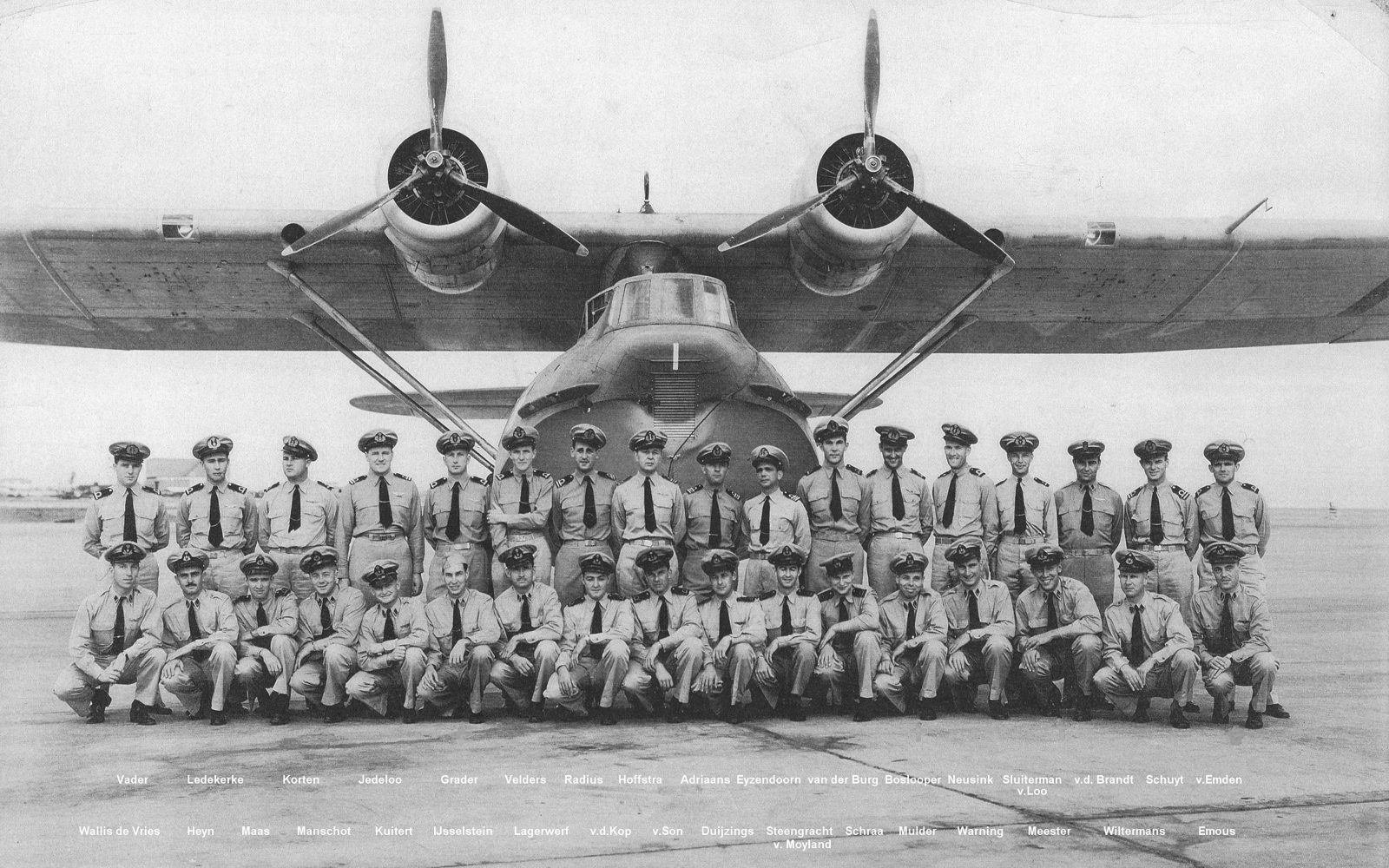
PBY 73-P-9 had her first success on August 20, 1942 while being flown by Lt. Robert B. Hopggod and crew while protecting British Task Force SN-73. The German sub tender U-Boat U-464 “Milchkuh” was spotted 175 NM south of Hofn, Iceland and attacked, causing lethal damage which necessitated scuttling by the crew.
The second success for 73-P-9 was two months later, October 5, 1942, while under the command of Chief Pilot M. Luke and crew. Flying cover for convoy HX-209, U-Boat U582 was spotted 400 miles south of Iceland. A low-level attack was commenced on the surfaced U-Boat. Within seconds, the U-Boat disappeared and a large oil slick was observed. The aircraft then transferred to VP-84 and became 84-P-9. On April 28, 1943, while flown by Lt. Roy Neff and crew, they attacked U-Boat U-528, heavily damaging it and necessitating a return to France for repairs. However, enroute, the crippled sub was found by British Coastal Command and sunk.
The final major action for 84-P-9 was June 24, 1943, while being flown by Lts. Joseph W. Beach and Albert M. Singluff. U-Boat U-200 was spotted and attacked. Dropping depth charges, they were unsuccessful in their first attempt. The crew of U-200 fiercely defended their boat with machine-gun fire, keeping the PBY at a distance. However, the crew on 84-P-9 had one last option, a “Fidol” homing torpedo. Within fifty seconds of the launch, U-200 was sunk. By the end of August 1943, 84-P-9 completed its last operational sortie and was flown to NAS Quonset Point where it became part of the inventory of Fleet Air Wing 7. In the months that followed, 84-P-9 served at NAS Anacostia, Gainesville, and Pensacola, finally ending up at Coast Guard Station Elizabeth City in May 1945. It was struck off charge on October 31, 1945.
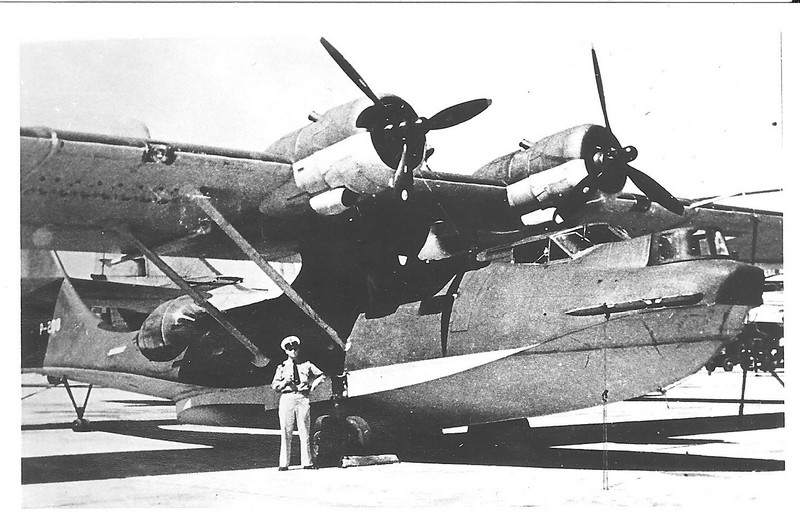
Following WWII, PBY 84-P-9 became N18446 in September 1946 and was sold to Rio Ten Airways, who operated it for one year. It was then sold to California Maritime Airways in December 1947 and was operated by them until 1949. From there, the aircraft passed through numerous owners to include Aero Corp. of Atlanta, R. Paul Weesner & George Lewis, Paramount Aquarium of Miami, Indamer Corporation, and W. Clayton Lemon of Roanoke, Virginia. Lemon sold N18446 to Transair Ltd., Winnipeg, Manitoba, Canada in October 1953, where it became CF-HHR. Transair operated CF-HHR until 1969, when it was sold to Field Aviation of Calgary. The aircraft was converted to water bomber configuration and flew it as such until 1972 until purchased by Avalon Aviation Ltd., of Red Deer, Alberta, Canada. Avalon used the aircraft extensively, even sending it to Chile in 1975 to help fight the vast forest fires they were experiencing. In 1979, the aircraft was then stationed at Perry Sound, Ontario, Canada under the new Canadian registration C-FHHR as Tanker #3 and later as Tanker #793. It was removed from service in 1986 and stored, until purchased on February 28, 1995 by the Dutch Cat Air Foundation.
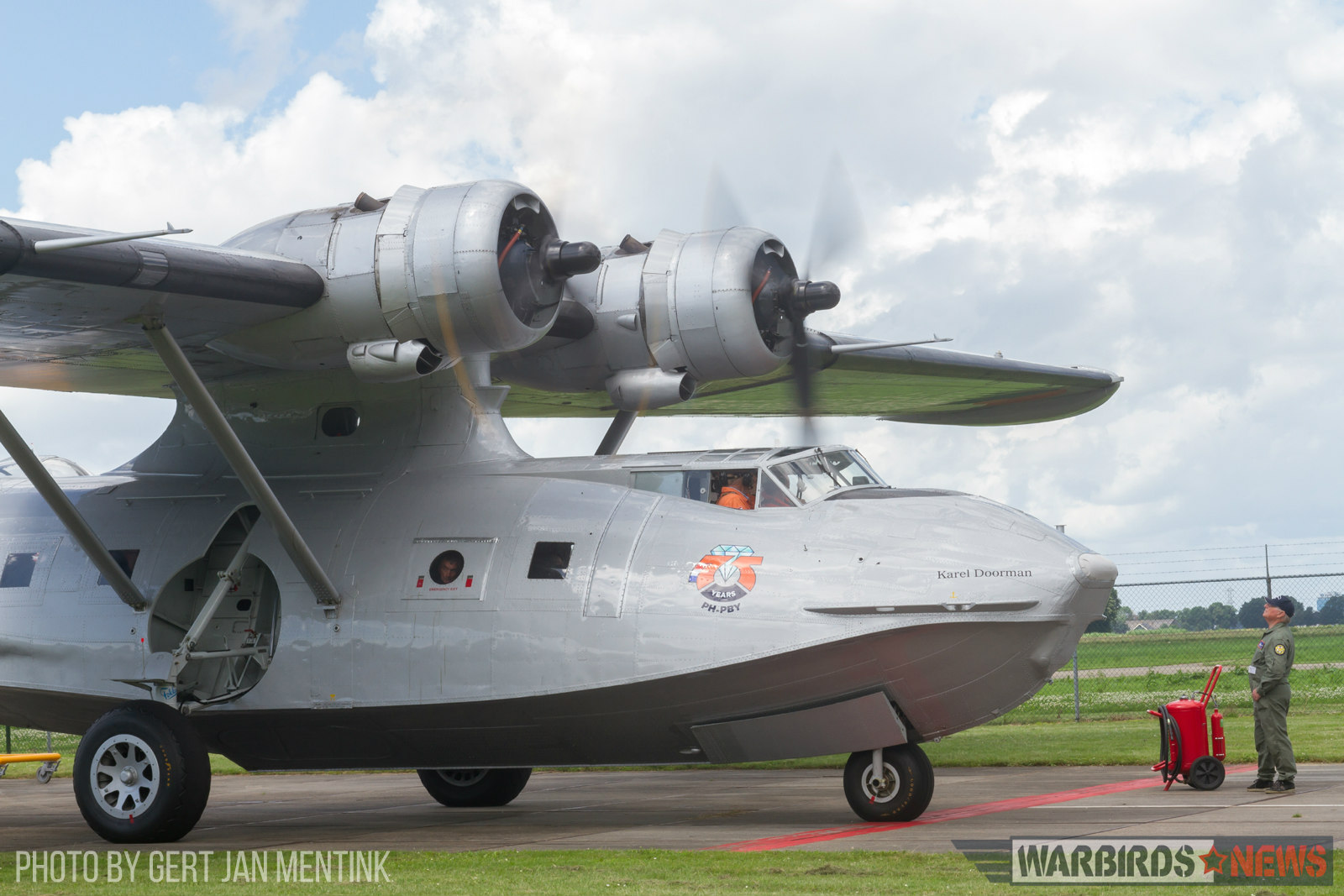
After purchase, C-FHHR was made ready for the ferry flight to the Netherlands. The water tanks were removed and replaced with sixteen passenger seats, eight in the front cabin and eight in the rear. The aircraft was repainted as Royal Netherlands Navy Y-74 in olive drab with orange triangle national insignias, as were carried during the Japanese invasion of the Netherland Indies in 1942. First flight was April 1, 1995. Starting May 9, 1995, the ferry flight commenced and after a refuel at North Weald in the U.K., C-FHHR arrived in Rotterdam. Total time for the trip was five days. Registration was once again changed to N27311, registered to Western Aviation Maintenance in Mesa, Arizona, but was still operated by Cat Air. Early in 1997, reservation was made for a Dutch registration, PH-PBY, and was granted on October 13 of the same year. By then, it was obvious that PH-PBY was in need of a full restoration. The Stichting Neptune Association, a volunteer organization based at Valkenburg NAS, offered to help. On May 11, 1999, PH-PBY touched down at this same station where PBY’s of the Royal Netherlands Navy were based during the 1950’s. There, SNA volunteers, supported by the RNN, managed to perform a complete restoration in four years. On August 4, 2004, PH-PBY made her first post-restoration flight now painted in post-war silver Netherlands Navy paint scheme carrying the code “16-218”.
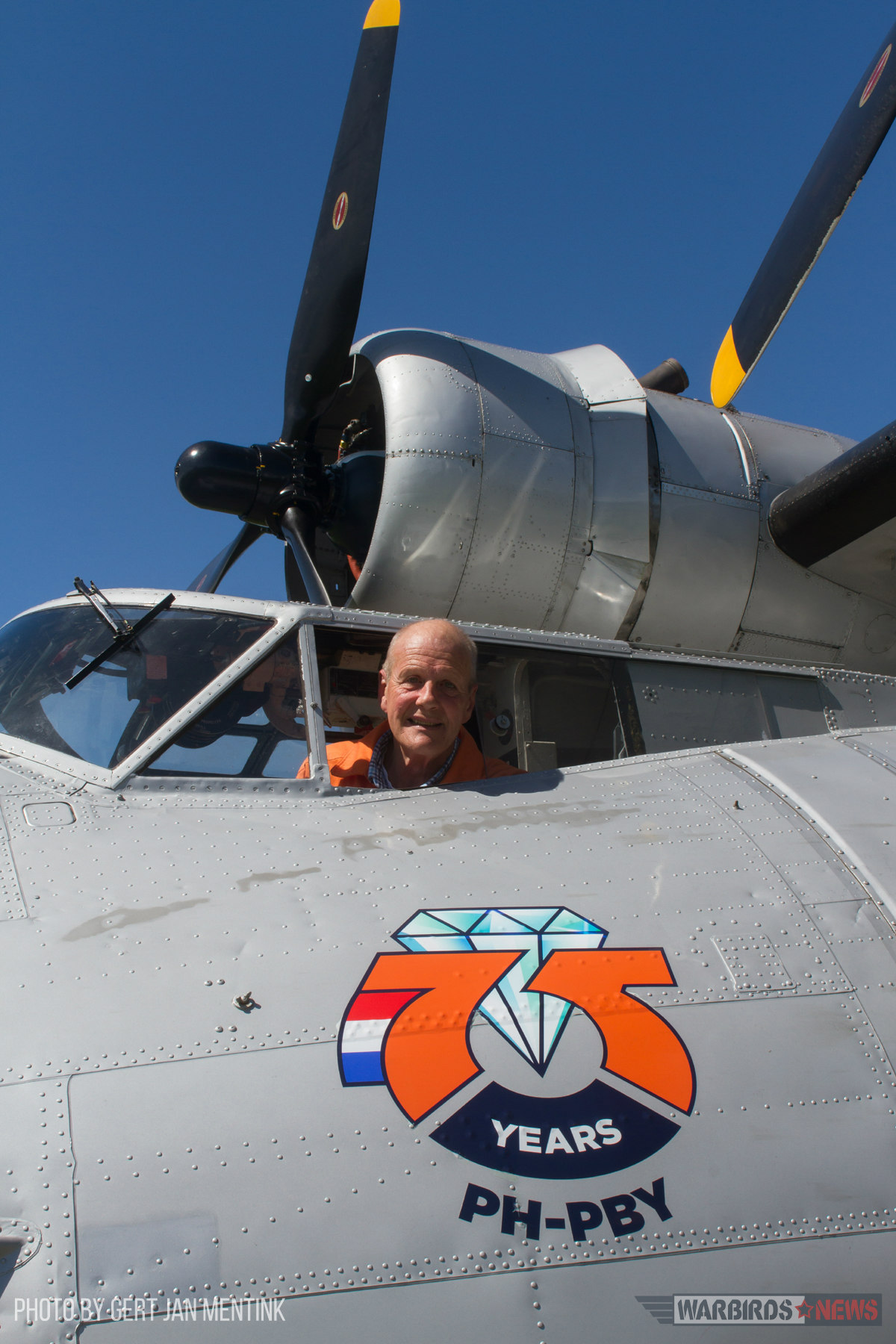
Currently housed in a special purpose-built hangar at Lelystad Airport built in 2010, the aircraft is maintained by a dedicated group of volunteers with oversight by the Dutch authorities. Since October 2016, the hangar is shared with a Douglas DC-3, registered PH-PBA, owned by the Dutch Dakota Association. In sharing the hangar, both organization expect closer cooperation in regards to maintenance and operation. Flown on a regular basis, the amphibian is a welcome visitor and display aircraft at many airshows throughout Europe. Due to modifications to its passenger interior, many hundreds of enthusiasts have been able to experience themselves the thrill of a ‘splash-and-go’ landing and take-off. These pleasure flights are usually carried as a roundtrip from it’s homebase of Lelystad, with one or two ‘wet landings’ on the IJsselmeer, the largest freshwater lake in Holland, formerly known as the ‘Zuiderzee’. On each flight, 15 passengers and one flight attendant can be accommodated. During the flight, passengers can move from the forward to the aft cabin and vice versa. Compared with the average modern airliner window, the view from one of the waist blisters is truly exciting! Once the annual inspection on PH-PBY is completed, bookings will commence for the flying season. Flights are planned from early April until the end of September and can be booked directly on the website www.catalina-pby.nl.

Be the first to comment
Graphic Design, Branding and Aviation Art